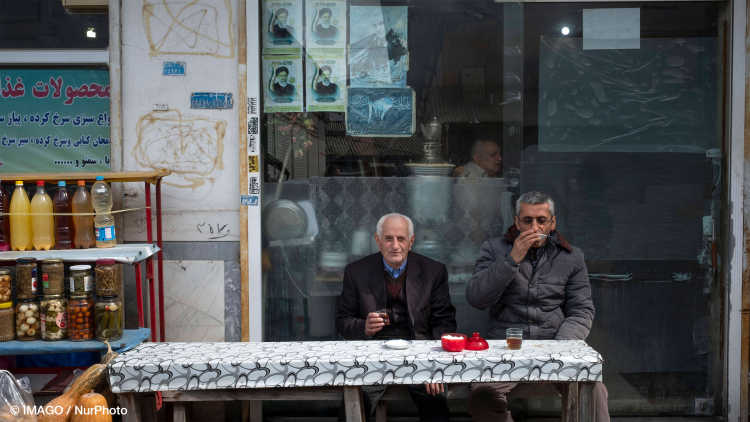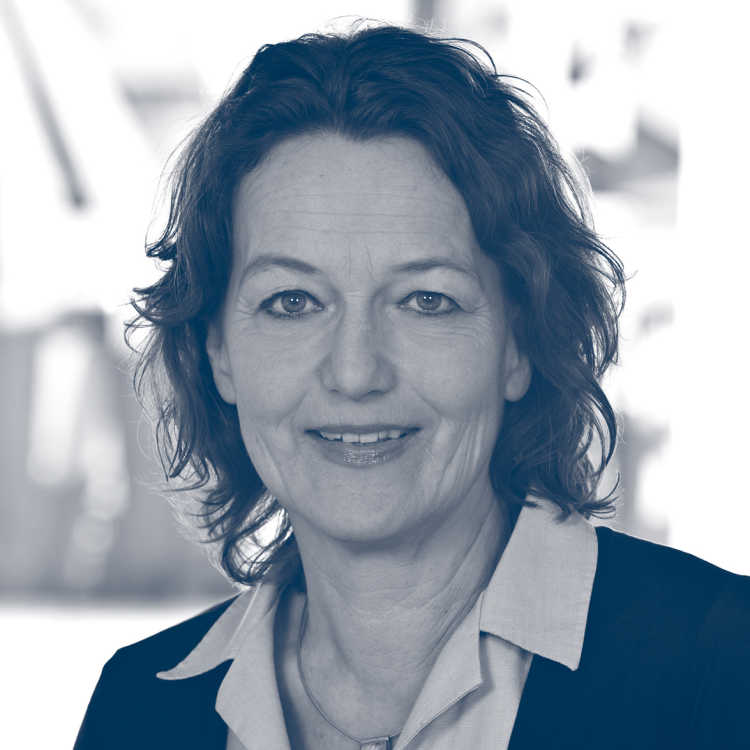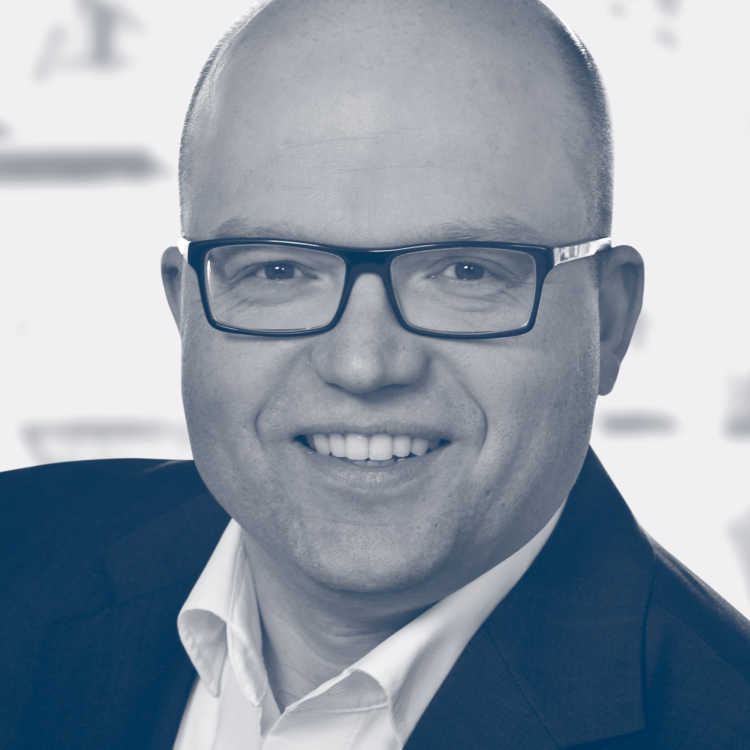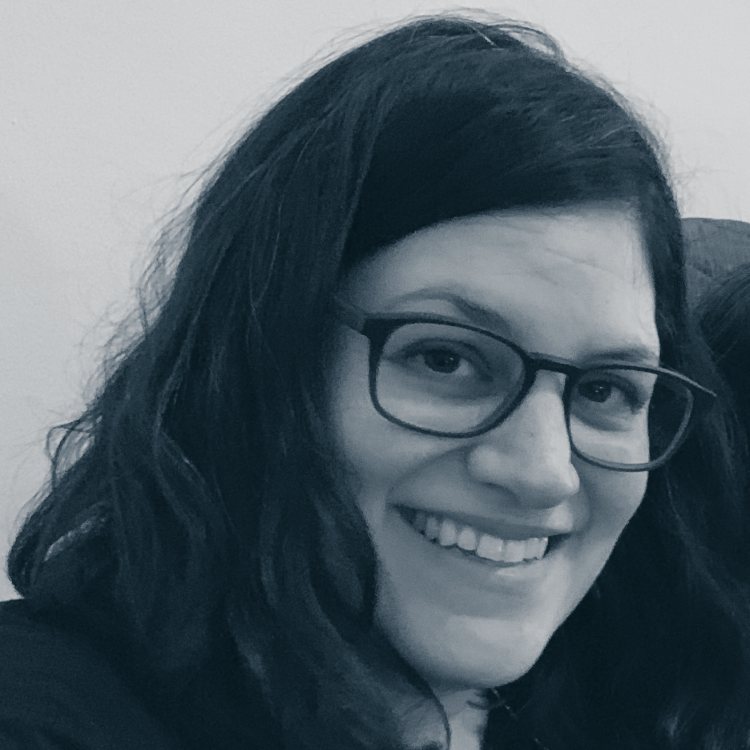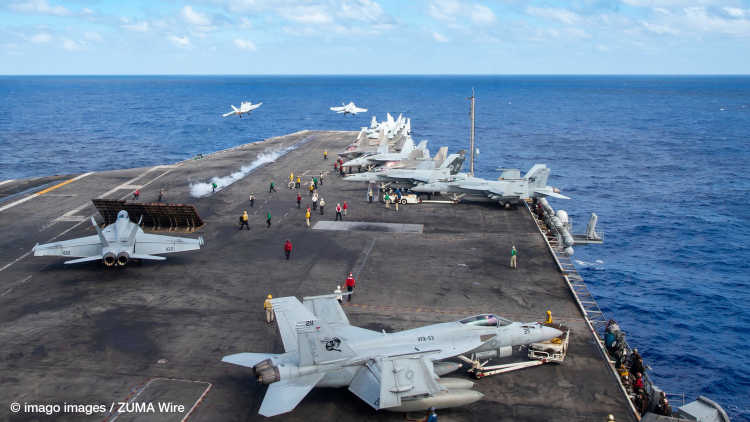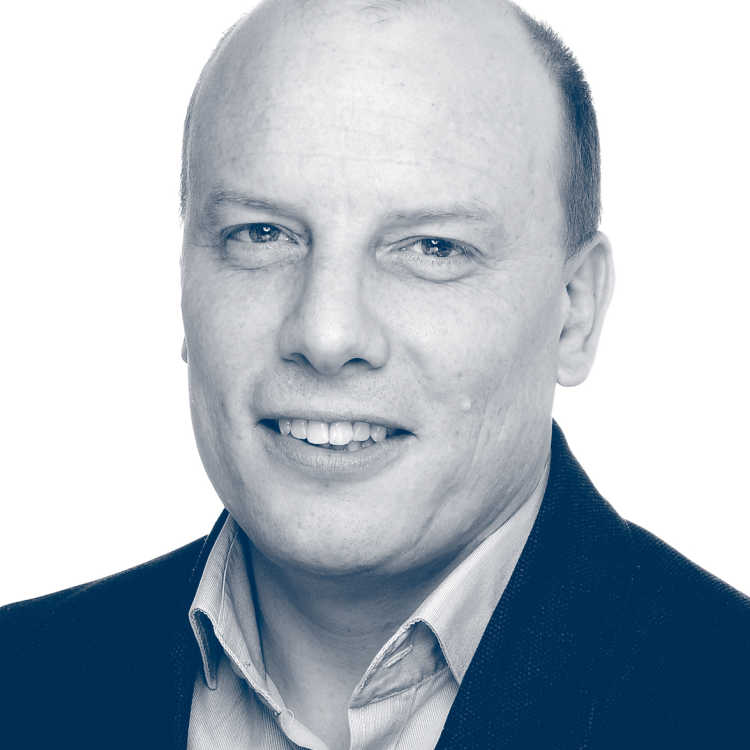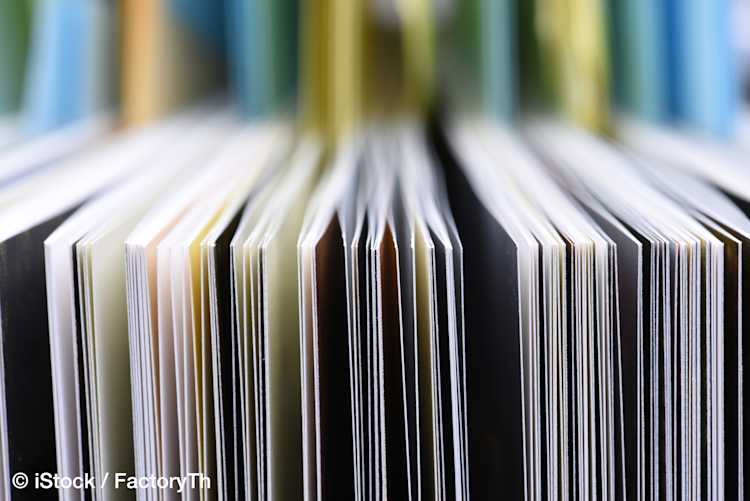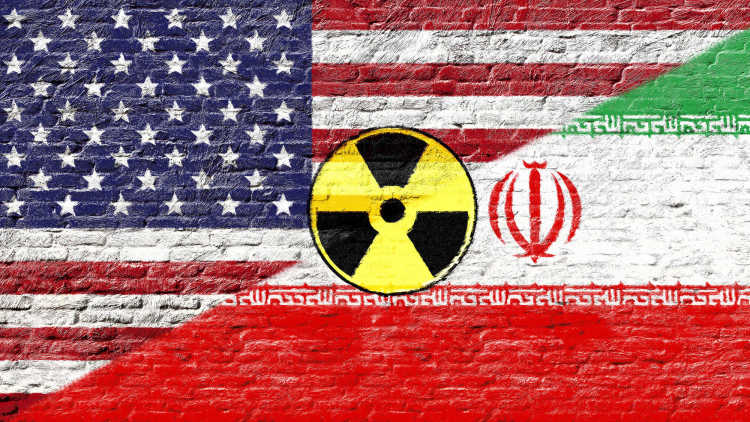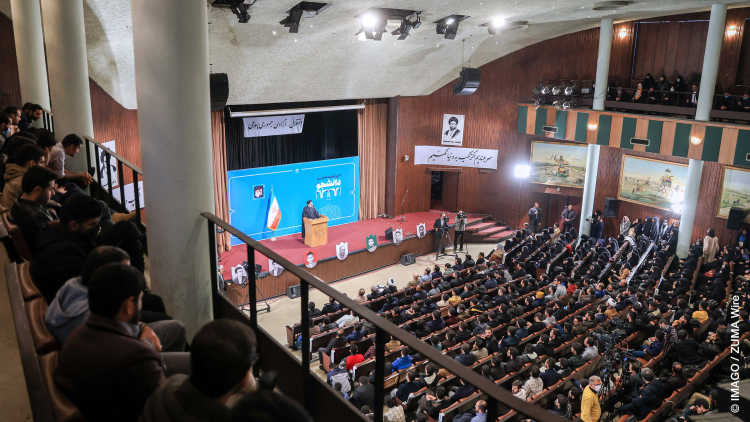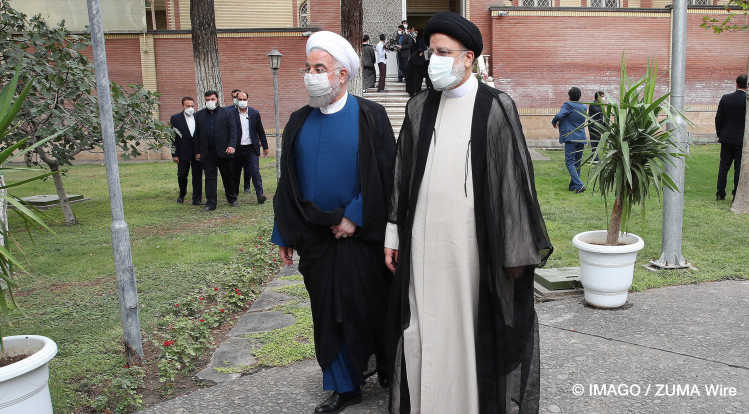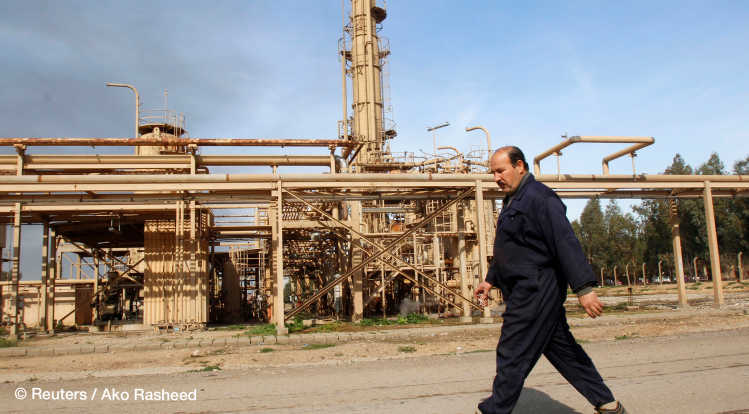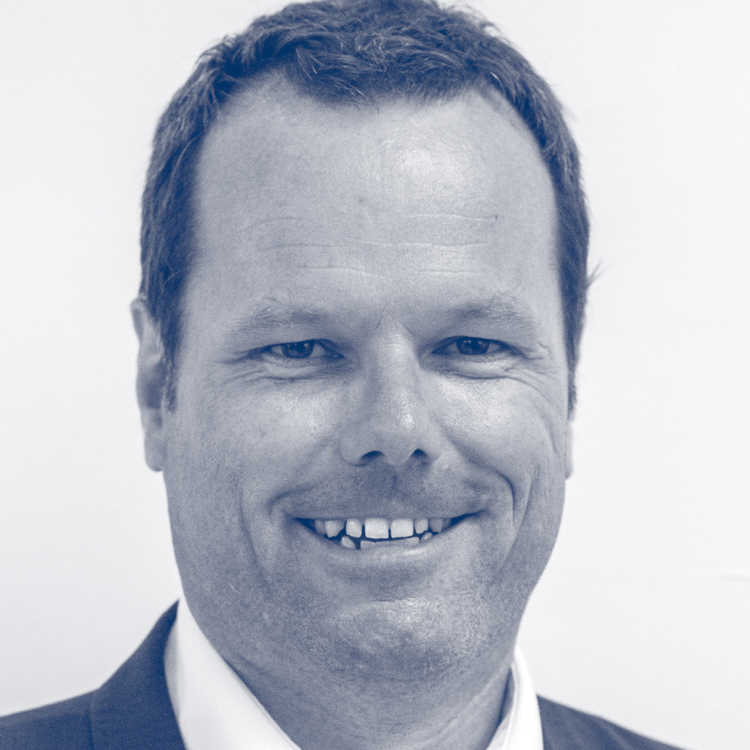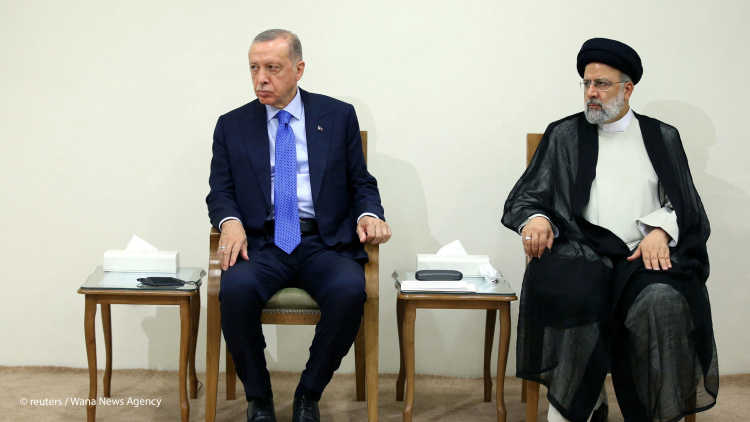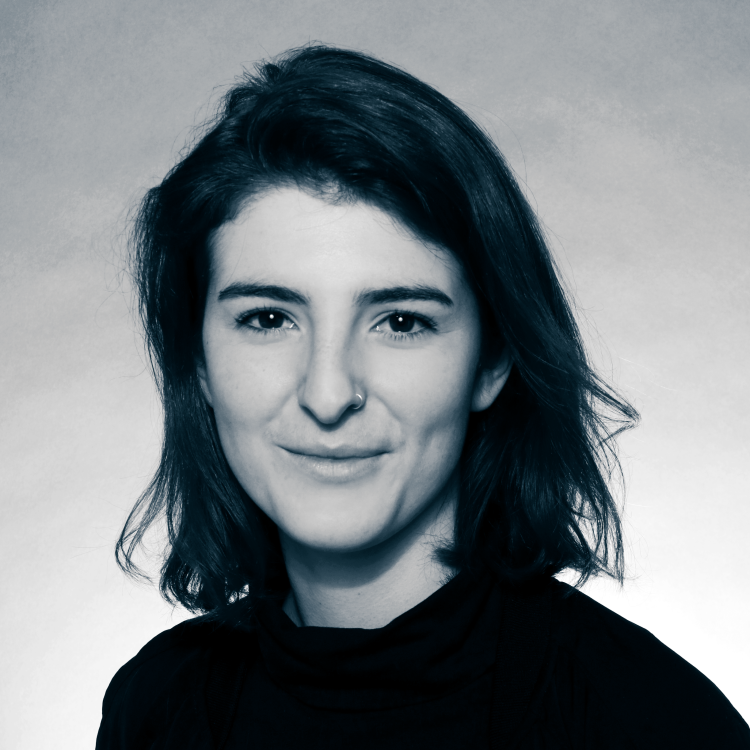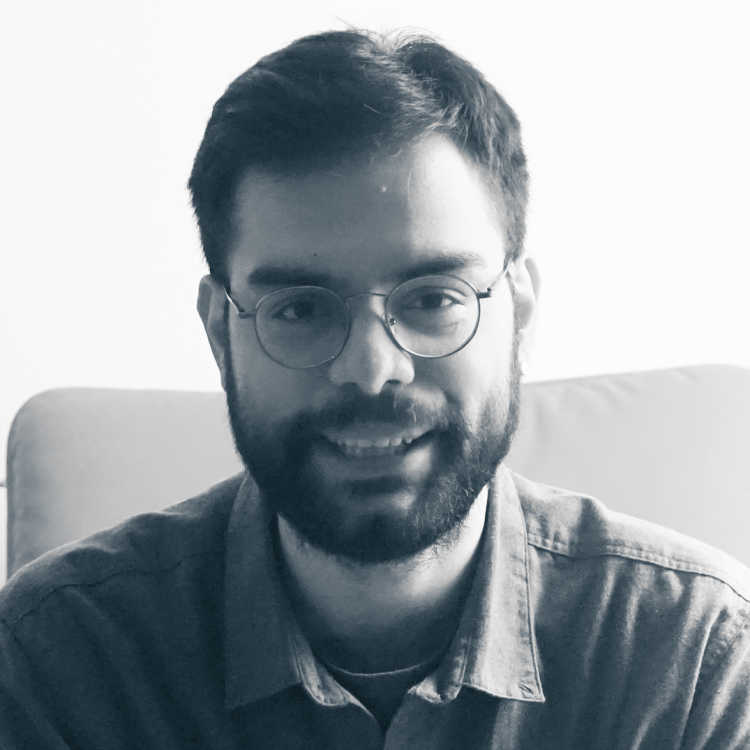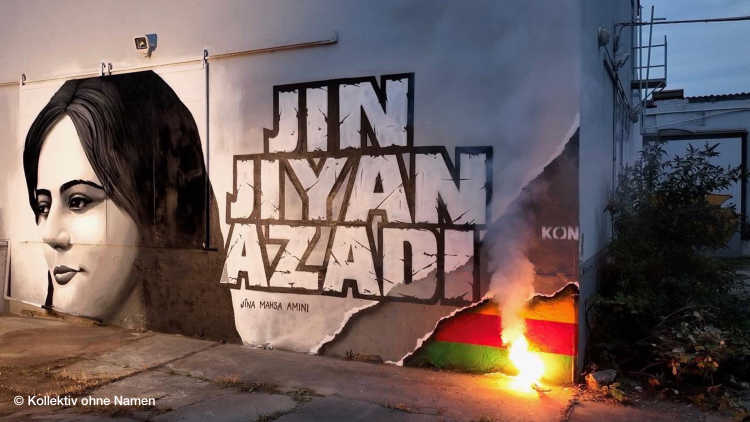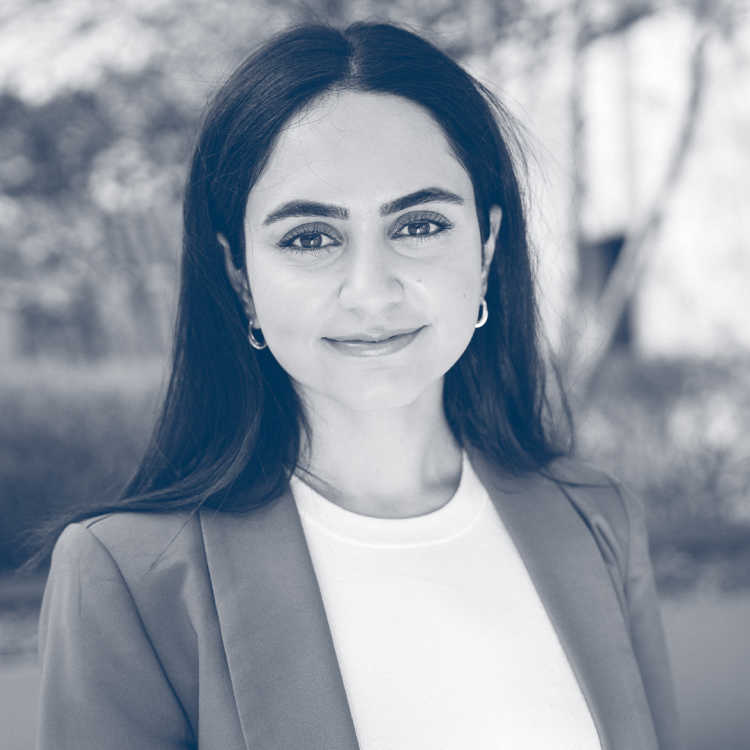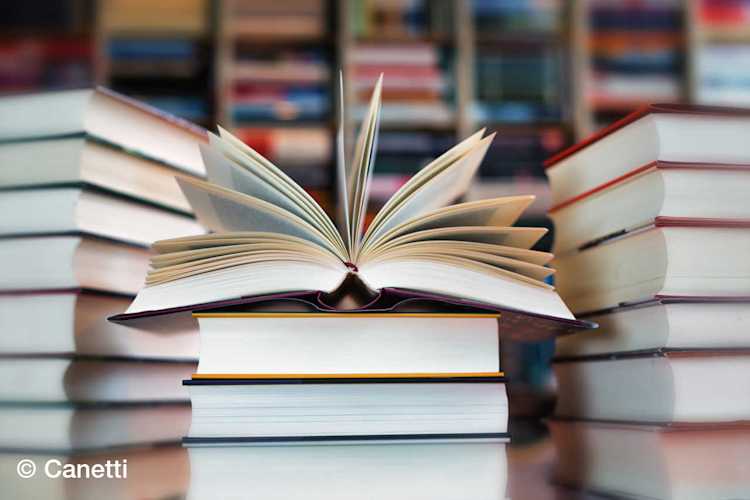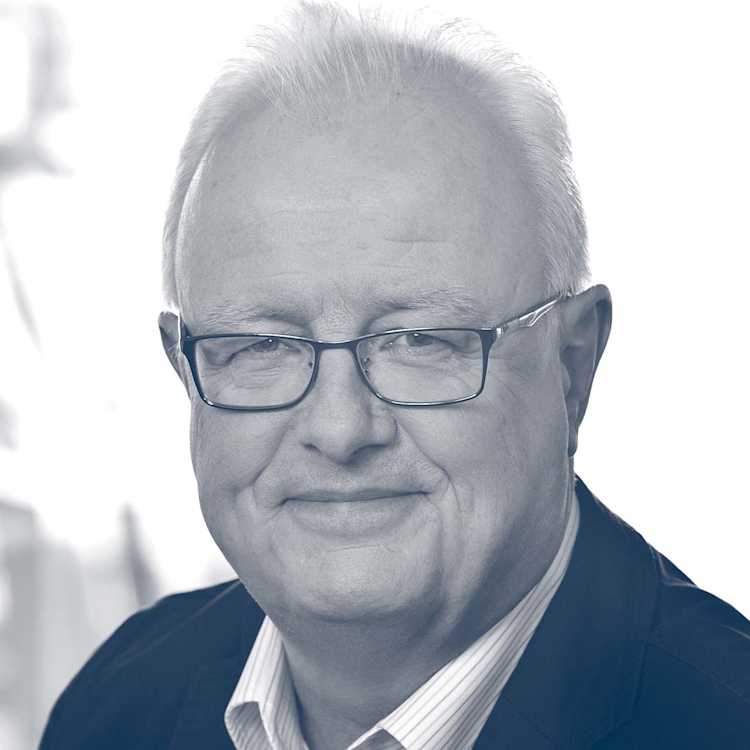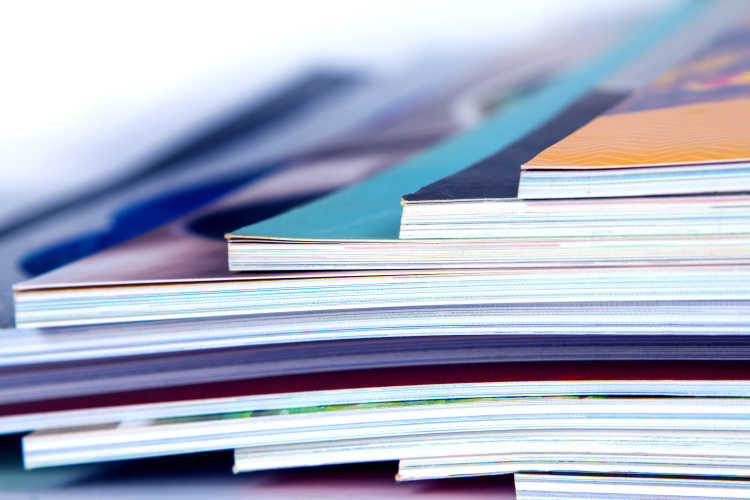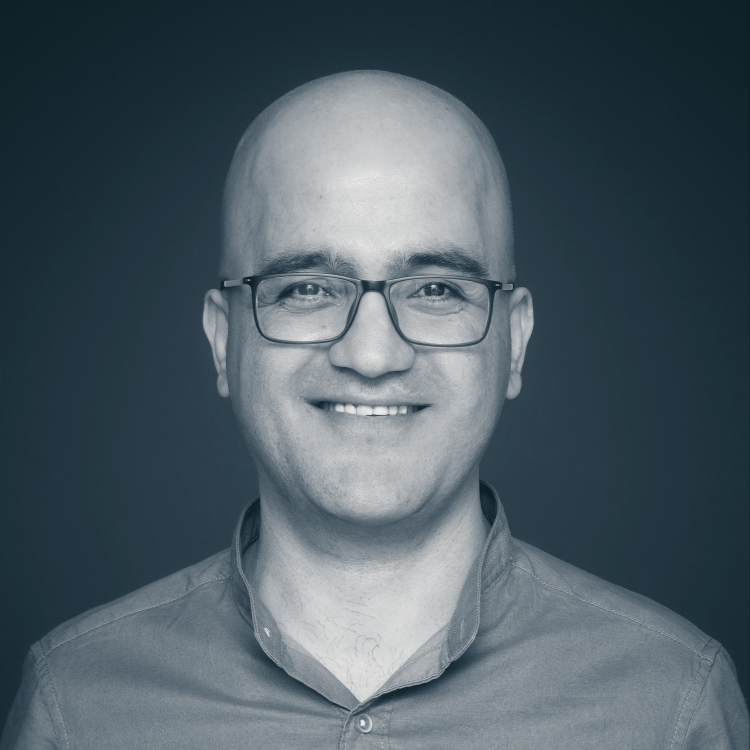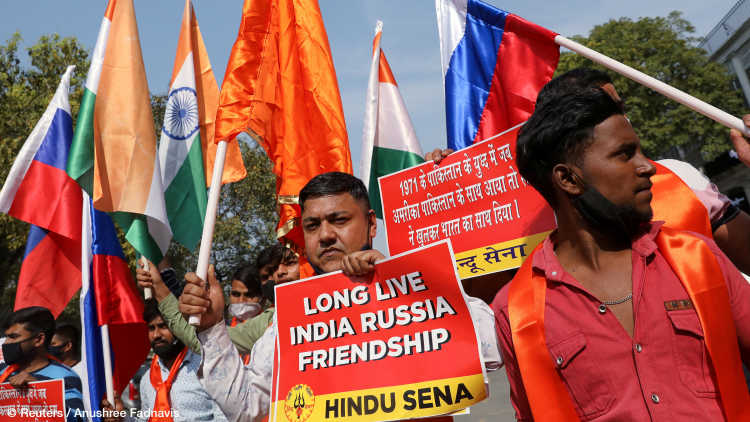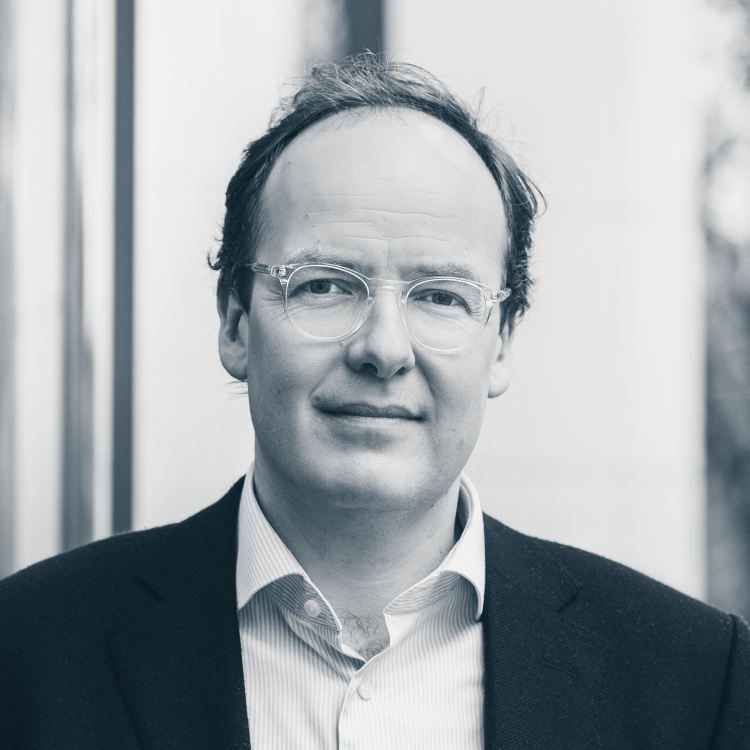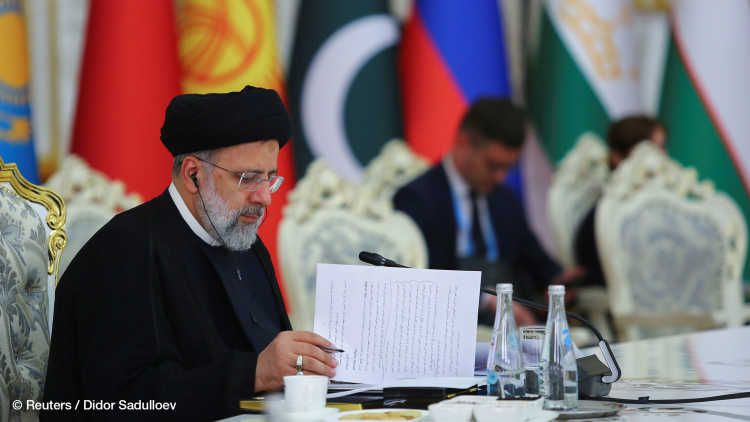- Startseite
- Publikationen
- GIGA Focus
- Re-Revolutionising Iran: Condemning Prosperity and Jihadi Management
GIGA Focus Nahost
Re-Revolutionising Iran: Condemning Prosperity and Jihadi Management
Nummer 3 | 2022 | ISSN: 1862-3611
Iran’s conservative politicians, known to be loyal supporters of Ayatollah Khamenei, have been actively working to revitalise the regime’s revolutionary values according to his vision. President Ebrahim Raisi’s efforts to deliver on such aims are linked with his hopes of becoming the country’s next supreme leader.
As poverty and inflation increase in Iran, various rounds of protests demonstrate brewing socio-economic discontent among ordinary Iranians. While the regime’s direct response consists of severe repression, President Raisi’s administration has also reacted with a mixture of propaganda, populist economic policies, and attempts to strengthen relations with Eastern powers.
Promoting a “modest lifestyle” as an Islamic and national virtue, condemning economic prosperity as part of materialistic, Westernised culture, and campaigning to change the nation’s consumption habits are among the current regime’s key responses to economic privation.
Declaring a commitment to solve the nation’s economic hardship through populist gestures and policies that are short of robust economic solutions has been emerging as an accompanying strategy.
Doggedly pursuing the consolidation of ties with non-Western global powers has been continued as a strategy to cope with Western sanctions.
These elements are embedded in the encouragement, promotion, and support of a new generation of political elite, frequently referred to as the “young jihadi managers,” who in Khamenei’s imagination, will be the vanguard of Iran’s progress in the years to come.
Policy Implications
Iran on the path of re-revolutionising itself will be more resistant to demands for change domestically, less likely to abandon its regional security strategies, and harder for Europe to cooperate with. Therefore, it is important for EU and German policymakers to take Iran’s longer-term strategies into consideration in order to develop lasting responses to them.
Revitalising Iran’s Revolutionary Ideologies
Iran’s supreme leader, Ayatollah Ali Khamenei, has been grooming a new political elite for senior positions, with the intention of maintaining the regime’s power and ensuring his own legacy. The new elite that came to power with the election of President Ebrahim Raisi is tasked with preserving the regime’s anti-Western interpretation of Islam, turning Iran into a global economic power, and strengthening the country’s role in regional and global security structures. Over the past decade, multiple sets of guidelines have been published by the office of the supreme leader that lay out detailed and ambitious goals for the future of Iran. Amongst those are two key documents, entitled The Islamic Iranian Progress Model (Markaze Olgouye Islami Irani-ie Pishraft 2011) and The Second Phase of the Revolution (Khamenei 2019). The former, first drafted in 2011 and officially launched in 2018, is the supreme leader’s long-term vision. It adopts the concepts and narratives of Shiʿa Islam, jihad, and anti-imperialism. The model sets out Khameini’s long-term vision for the country through to 2065 (1444 in the Iranian calendar). It defines a wide range of targets from reducing Iran’s economic dependency on hydrocarbon resource revenue to increasing the country’s birth rate. The other document, The Second Phase of the Revolution, is a communiqué that was issued by the Office of the Supreme Leader on the 40th anniversary of the Islamic Revolution in February 2019. It comprises two main elements: First, it highlights the achievements of the Islamic Revolution as social justice, economic advancement, independence from the West, and resistance against global imperialism. Second, it outlines the regime’s priorities for the years ahead as science and research, spirituality and morals, economy, political and economic independence, foreign policy and dealing with adversaries, and how the ideal lifestyle of average Iranian citizens can be executed in accordance with Shiʿa Islam, which requires (in the exact wording of the document) “intelligent jihad” (Khamenei 2019) to counter the Western influence on the lifestyle of average Iranians. Although the communiqué does not directly refer to The Islamic Iranian Progress Model, it is indeed in line with its guidelines and demonstrates the supreme leader’s support for the model.
The new Iranian elite has been assigned to implement relevant policies that will materialise the vision laid out by these two key documents. This vision for Iran does not see the country seeking economic prosperity or de-escalation at regional or global levels. Instead, Iran should create, or contribute to creating, a new world order, through which the Islamic Republic’s power is consolidated domestically, regionally, and globally. The path towards achieving such goals is paved by the newly emerged team of decision makers, who have an ideologically driven view of the world. In their view, the world is witnessing a
new dynamism of the Islamic Awakening Movement based on the model of resistance to the US and Zionists’ domination; the failure of US policies in the West Asian region and the defeat of their traitorous allies in the region; [and] the expansion of the powerful political presence of the Islamic Republic of Iran in West Asia, and its wide-ranging reflection across the world of domineering powers. (Khamenei 2019)
The election of President Raisi has provided the new elite with special privileges and an administrative monopoly that allows them to distribute resources across their most loyal constituencies. The presidency of Raisi, widely known to be Khameini’s preferred candidate, is a major step towards achieving the latter’s long-term vision for Iran. Raisi has established a trusting relationship with the supreme leader, pledging full allegiance to him, and is willing to follow his guidelines unconditionally. For those reasons, it has been widely speculated that he might stand a good chance of becoming Khamenei’s successor. Raisi’s presidency is not expected to go smoothly. This is mainly due to the fact that Iran is experiencing the toughest economic conditions since the Islamic Revolution in 1979, and the economic hardship has deepened the rift between the state and its citizens. This analysis will review the main challenges that Raisi’s administration is expected to face and will highlight the strategic direction he will likely take.
Economic Decline: The Main Pain Point
Over the last decade, inflation has been one of the most pressing economic hardships in Iran. Sanctions targeting the hydrocarbon sector and trade have affected the government’s ability to generate revenue. The loss of revenue created a mounting budget deficit. The government has been increasing the money supply to finance its budget deficit, which has predictably led to substantial devaluation of the currency and rising inflation. Inflation stood above 30 per cent over the past two years. As a result, by 2020, more than 30 per cent of Iran’s population was living in poverty (Bazoobandi 2020). According to the Statistical Centre of Iran, the average cost of living in urban areas doubled between 2018 and 2020. The rise of inflation has pushed the majority of the Iranian middle class into poverty.
Widespread poverty has aggravated socio-economic dissatisfaction, which has manifested in several rounds of labour strikes and worker protests. Such demonstrations started during Hassan Rouhani’s presidency and have continued under Raisi’s government. The protests have been diverse in terms of the geographic location in which they occur, their duration (before they die off or are severely suppressed by the local forces), and the sectors from which the workers come. One day after the election of Raisi, a wave of labour strikes began across several state-owned companies in the oil and gas sector. Workers demanded higher pay, better job security, and improved working conditions. Since Raisi’s election, oil and gas workers, civil servants within the judiciary, and teachers have all organised mass protests.
A new wave of unrest also began in May 2022 after the government announced a decision to lift some of the food subsidies, a move that increased the price of all food items, most crucially wheat and rice. These episodes have demonstrated mounting frustration due to declining welfare amongst different social groups with varied political views. The depth of public discontentment became particularly evident when, in a rare move, judiciary employees held demonstrations against the government’s refusal to increase their pay. The judiciary employees are characteristically amongst the most loyal forces to the regime. Therefore, their protest is a strong signal of the depth of the socio-economic dissatisfaction in Iran.
The administration’s policy solution to the public frustration over the rising inflation remains weak. While Raisi’s government has reportedly increased military spending in its first proposed budget by 240 per cent, it grants only small salary increases to government employees, including a mere 10 per cent pay rise for teachers (Asia News 2021). The Islamic Revolutionary Guard Corps (IRGC) has been a major recipient of the budget increase. In fact, the government has adopted a heavy-handed response to all the popular protests, and the IRGC has been a key player in the suppression of dissent. Violent clashes, detentions, and long prison sentences for those involved in such protests have been common strategies to tackle any form of public unrest in Iran.
Figure 1 shows the trend in rise of inflation and number of protests that took place across the country between 2016 and 2021. As demonstrated in the figure, there is a clear correlation between the rise of inflation and the rise in the number of protests in Iran. In November 2019, widespread protests broke out in various parts of the country. Protesters received a historically violent response from the regime, which reportedly was directly ordered by the supreme leader and became “the bloodiest crackdown on protesters since the Islamic Revolution in 1979” (Reuters 2019). The dip in number of protests in 2019 and the following year is likely a result of the regime’s violence against the protesters in that period, alongside an expected dropoff at the outset of the COVID-19 pandemic. In other words, rather than providing a meaningful economic solution, the government has used fear and oppression to deal with the rising dissent.
Figure 1. Inflation Rates and Number of Protest Incidents in Iran (2016–2021)
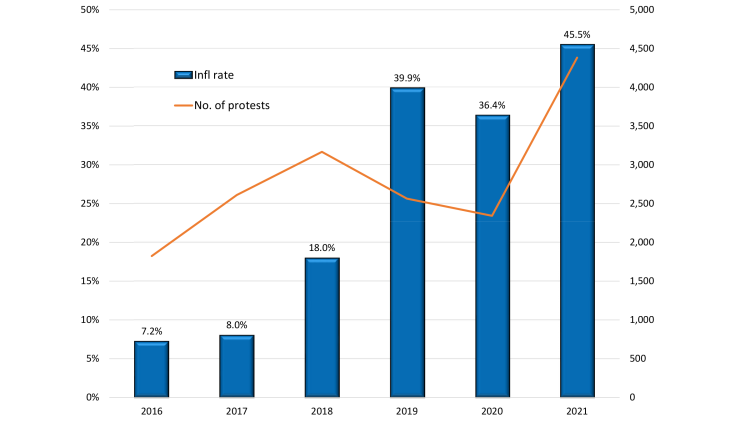
Sources: ACLED Data 2021; World Bank 2019; Donya-e-Eghtesad 2021a.
Beyond preparation of security and military forces to supress potential upheaval, several strategies have been evident in the Raisi government’s agenda – namely, managing public expectations through perpetuating a new narrative about economic prosperity; implementing populist economic policies; and attempting to strengthen relations with Eastern powers (i.e. Russia and China).
A New Narrative to Condemn Economic Prosperity
One of the strategies of the regime in response to the ongoing socio-economic crisis has been to introduce a new political and religious narrative that, instead of offering tangible economic solutions to address the poverty, seeks to associate what many Iranians consider a better standard of living with negative concepts such as consumerism, overconsumption, and greed. The latter two are often identified by the Ayatollah Khamenei as key characteristics of the “Western lifestyle.” While regime critics describe this narrative as an effort to normalise poverty, some of the most senior political and religious figures (e.g. members of the parliament, Friday prayer imams, and Iran’s supreme leader) have been actively perpetuating this narrative. Khamenei has frequently called for the “correction of consumption patterns” to hold central importance in Iranian economic resistance strategies. Islamic Republic of Iran Broadcasting (IRIB), the state-sponsored media corporation of Iran, has produced a series of programmes to show the citizens how to cope with their economic shortcomings. A live televised programme in which Iranian women in conservative outfits discussed how to mend their children’s clothes (when they cannot afford new ones) prompted widespread criticism by Iranians across various media (including in diaspora communities).
The government’s effort to change consumption patterns in Iran has often been referred to in terms of controlling domestic energy consumption. Iran’s high level of domestic energy consumption and large energy subsidy bills have been a major challenge for all previous administrations. The country’s total electricity consumption increased by more than 400 per cent between 1990 and 2019 (IAEA 2019). In 2018 the government spent approximately USD 69 billion on fuel subsidies. The total amount of subsidies is equal to approximately 15 per cent of the country’s GDP (IAEA 2018). The change in energy consumption patterns does indeed require changes beyond those coming from citizens’ lifestyles and consumption habits; updating public transport capacity and technology will also be crucial. The narrative that condemns economic prosperity, however, is not limited to reforming energy consumption. It takes a holistic approach that condemns luxury in life or, in Ayatollah Khamenei’s words, “gentility” (ashra’a f-ee gari), which not only refers to maintaining a lavish lifestyle but also resembles an anti-revolutionary ideological orientation, as such wording was often used to describe the elite under last monarch of Iran. The supreme leader has officially ordered IRIB to make the required effort to help change the perception of citizens on issues such as “consumption, luxurious habits and extravagance” (IRIB News Agency 2016). Khamenei has referred to such cultural change as “jihad,” an Islamic concept that has been used in various contexts since the Revolution. All in all, as inflation and socio-economic dissatisfaction remains high, the political leadership in Tehran is using various propaganda tools to try to influence the citizens’ economic expectations and create a new culture of living under the banner of “Shiʿa jihadi” lifestyle.
Populist Gestures
Beyond a new narrative that condemns consumerism and ashra’a f-ee gari, Raisi has demonstrated a strong tendency to adopt populist gestures in which he appeals to the nation for their cooperation and “patience” and, regardless of the facts, promises to relieve economic hardship and improve the standard of living. In this narrative emphasising patience, citizens are often referred to as heroes facing a mortal danger caused by a combination of an economic war of sanctions (led by the United States) and the economic incompetence of the previous administration, while the current government is the sole power that is creating some kind of revival to fight this crisis. In his election campaign, President Raisi set out economic targets that will prove extremely difficult to achieve, such as building four million affordable housing units, creating four million jobs, and reducing inflation to single-digit figures – all by the end of his (first) term. His campaign promises were clearly made to resonate with those segments of society that have suffered most from the economic hardship and to generate votes. Since his election, he has made frequent visits to different parts of the country as a gesture to demonstrate his efforts to resolve the people’s day-to-day struggles. Between his inauguration in August 2021 and December 2021, he made 11 provincial visits. These visits were portrayed by the government as opportunities for citizens to share their grievances with the president and seek assistance. During the visits, Raisi reportedly received 35,000 letters directly from the citizens of those provinces. The presidential office hired 300 people to log the public requests in a centralised online portal that allows the citizens to receive updates and follow-on responses (Donya-e-Eghtesad 2021b).
Whilst implementing some painful economic policies, such as cutting food subsidies – referred to as “economic surgery” – Raisi’s administration has initiated economic policies that are aimed at demonstrating his government’s commitment to supporting the poor. Ehsan Khandouzi, Iran’s finance minister, announced that the government has ordered all Iranian banks to fast-track small loan applications (ones less than IRR 1 billion, roughly equal to USD 4,500) without collateral (Iranian Students’ News Agency 2022). The government of former president Mahmoud Ahmadinejad had introduced similar initiatives in the early 2000s in which the government allocated more than USD 80 billion, in the form of small loans, to undesirable loan applicants, who were mostly unemployed. Nearly all of the extended loans were used in ways diverging from those laid out in the applications. The credit policy, therefore, did not address the widespread unemployment in Iran; instead, it led to a rise in inflation caused by an increasing monetary base and created a property market bubble. A similar or perhaps worse result can be expected from similar credit schemes under Raisi.
Unlike the current administration, Ahmadinejad’s government had access to very high oil revenue. Distributing loans under such schemes will further pressure the government vis-à-vis the budget deficit, as Raisi’s administration is short of cash, mainly due to a decline of hydrocarbon export revenue. If the nuclear negotiations conclude in a deal, Iran is expected to receive a hefty sum from its assets abroad, which have been frozen due to the banking sanctions, in addition to benefitting from a rise in hydrocarbon export revenue. Such schemes require spending some of those assets to finance short-lived populist initiatives that aim to demonstrate success in improving the livelihood of most underprivileged Iranians. Nevertheless, converting foreign assets to finance such credit lines will bring further inflationary pressure that would likely increase public discontent.
According to the Central Bank of Iran, by September 2021 the loan-to-deposit ratio of the banks stood at about 82 per cent. Given the economic hardship caused by the sanctions and years of mismanagement, the country’s banking system is in an extremely fragile state (Oxford Analytica 2022). Adding pressure by extending more bad loans (i.e. to low-income applicants with no collateral, who are likely to default) will only increase the existing risk of a banking crisis in Iran. Unless the Raisi administration is planning to use such announcements merely as a populist gesture, releasing such credit in the current economic environment will only add to the prevailing economic problems.
No West, Yes East
Like his predecessors, Raisi has been following the strategy of consolidating ties with non-Western powers (i.e. Russia and China). Since his inauguration, Raisi has made three trips abroad: to Tajikistan, where he attended the Shanghai Cooperation Organization’s meeting; to Turkmenistan, where he attended the Economic Cooperation Organization’s meeting; and to Russia. Beyond the fact that he is reluctant to travel to Western countries due to the security risk caused by his alleged association with the mass executions of the 1980s in Iran when he was a member of the “Tehran death committee” (Wintour 2021), his frequent visits to non-Western countries indicate his determination to consolidate Iran’s alliance with Eastern powers.
Raisi has also been advancing an Iran–China alliance that was initiated by Rouhani through the 25-year strategic cooperation agreement. The agreement, signed in March 2021, brings Iran into China’s Belt and Road Initiative and includes economic, military, and cybersecurity collaboration. Raisi’s foreign minister, Hossein Amir-Abdollahian, visited China in January 2022 for further discussions on the agreement. It is not surprising that relations with China, the biggest buyer of Iranian oil, are a top priority both for the Iranian government and for Beijing. Beyond the day-to-day business and trade, however, engendering closer relations with China has been an aspiration for the leaders of the Islamic Republic in Iran. China’s growth model, which offers limited economic liberalisation to manage public expectations, has long inspired Iran’s revolutionary leaders, who share China’s anti-West sentiments.
The main difference between the economic narrative of Raisi and that of his direct predecessor in terms of non-Western partners is that Raisi and his team claim to have the ability to turn Iran into a global economic power without the need for sanctions to be lifted. Such claims may well have been inspired by the Chinese and Russian models of economic success without any political reform. Moreover, Iran has been investing in military and security capabilities, hoping to emerge as a major regional power. Iran has not condemned Russia’s aggression in Ukraine. Iran’s former defence minister, Rear Admiral Ali Shamkhani, wrote on Twitter that the crisis in Ukraine shows how instability and insecurity in the East can have major consequences for the West. Raisi is expected to pursue the “Look East” strategies not only as mechanisms for economic survival, but also to form strong alliances in the deeply divided global system and contribute to creating the new world order in accordance with Khameini’s vision.
The New Generation of Policymakers
The Islamic Iranian Progress Model, which outlines the regime’s plans and priorities for the coming decades in Iran, highlights the need for jihadi strategies to achieve its goals. “Jihad” in this context is a term coined as part of official regime propaganda during the Iran–Iraq War in the 1980s. The regime’s interpretation of jihad is inspired by the Islamic concept of jihad that is mentioned in 17 surahs and 400 verses of the Qur’an. In the narrative of the regime, jihad requires zeal and selflessness to the point that the person is willing to give up her/his life to advance the collective interest of Islamic society – all this in full compliance with Shiʿa Islamic values. The attributes of a jihadi according to the Islamic Republic, therefore, involve strong anti-Western and anti-imperialist sentiments. In Khamenei’s words, jihadi management requires a “we can do it” spirit. He also emphasises the important role of Iranian youth as the vanguard of the progress and the key players in the management of the country in the years to come.
Raisi is widely understood to be committed to implementing Khamenei’s vision. Ideological affiliation and regime loyalty are determining factors for appointments to senior positions in his cabinet. Some of his ministers were appointed from within Khamenei’s closest inner circle. For example, Ehsan Khandouzi, the minister of Economic Affairs and Finance, and Hojjatullah Abdulmaleki, minister of Labour and Social Affairs, both graduates of the most conservative higher education institution in Iran (Imam Sadegh University), have been closely associated with the Office of the Supreme Leader. The technical skills of the new jihadi managers, the “ideal elite” to lead Iran in the decades to come, are quite different than those that can be gained at “modern” educational institutions. Admission to Imam Sadegh University requires a thorough background check and vetting. As such, their academic work does not provide any link with modern economic or management theories and concepts. Instead, these topics are dealt with in metaphors and propaganda-like recommendations that in most cases do not provide realistic solutions to the existing economic problems in Iran.
On his personal website, Khandouzi, for instance, shares a list of his publications, some of which are focused on economic lessons learnt from the Qur’an. He has been an advocate for economic justice and progress according to Islamic teachings rather than the economic models established by Western institutions. In one of his papers, titled Economic Defence Strategies, from the Perspective of the Holy Messengers, he discusses how holy messengers of God defended their followers under siege and overcame strategic threats. Most of Khandouzi’s work focuses on economic resistance, as he tries to relate the current economic challenges of Iran to those of the holy Islamic figures. Abdulmaleki’s work, which shares the same fundamentals as Khandouzi’s, has been frequently published on Khamenei’s website. He has written extensively on the importance of an “economic jihad” and “resistance” in Iran. His work, like that of Khandouzi, is focused on relating the current economic challenges in Iran to traditional Islamic theological concepts. The appointment of these figures to the most senior offices in charge of economic policies is very much in line with Raisi’s overall populist discourse of heroes who overcome mortal threats by their enemies by the will of God and a jihadi attitude that entails collective self-sacrifices (mainly by the people). Taken together, having the “jihadi” elite in the most senior offices of Raisi’s administration is expected to impact not only the corresponding policy formulated by them but also the direction of the country in the longer term.
The Re-Revolutionised Iran in the Global Community
Given Khamenei’s old age, it is speculated that Raisi’s overall strategies are influenced by his hope to become Iran’s next supreme leader. Against that backdrop, appointing “young jihadi managers” to the most senior offices in Iran could, therefore, be a decision with a long-lasting effect – a decision that not only cements the prospect of assuming the highest political power in the Islamic Republic of Iran for Raisi, but also secures Khamenei’s full support for Raisi and his team as the protector of the Islamic revolution’s legacy. As a result, Raisi’s governing strategy as it has emerged since he came to office is built on three elements:
continuing populist gestures, combined with, if needed, oppressive measures to control public unrest;
advancing “Look East” policies; and
grooming a new elite for senior political positions in preparation for the post-Khamenei era in Iran.
Re-revolutionising Iran and the potential domination of jihadi management strategies is indeed built on the principle of antagonising the West and would, therefore, ultimately deepen the division between Iran and Western powers. The most prominent non-Western global powers, China and Russia, provide a counterexample of Western theories of a globalised world, in which the nations who do not share the West’s democratic social and political values may change course should they have mutual commercial interests. Over the next eight years (assuming Raisi wins the next presidential election in 2025), the political strategy of Iran is likely to be more in line with those of Russia and China than the European countries. Iran on the path of re-revolutionising itself will be more resistant to demand for change domestically, less likely to turn its back on its regional security strategies, and harder for Europe to cooperate with (in the context of the nuclear negotiations and beyond). Finally, for all the reasons explained above, should Iran’s economy be opened to the global market in the coming years, Russia and China will be the top beneficiaries of such an opening ahead of any European economy. Therefore, it would be naïve to assume the bolstering of the ideologically oriented political discourse inside Iran will have no spillover effect on the longer-term foreign strategies of the country, specifically as it concerns relations with the Western secular governments. Moreover, policies that help legitimise and strengthen the suppressive apparatus in Iran, such as removing the IRGC from the US Foreign Terrorist Organizations list, must be dealt with carefully. The IRGC’s business and military complex has been instrumental in forming the regime’s most hardline strategies, working to achieve their aims. In addition to the new “jihadi” elite, the IRGC will remain a key player in achieving the vision of Iran’s supreme leader in the years to come.
Fußnoten
References
ACLED Data (2021), The Armed Conflict Location & Event Data Project, accessed 8 June 2022.
Asia News (2021), Iranian Teachers Strike over Wages and Rights. Police Repress the Protest, 16 December, accessed 8 June 2022.
Bazoobandi, Sara (2020), Deepening Poverty Threatens the Social Contract in Iran, Arab Gulf States Institute in Washington (blog), 22 October, accessed 8 June 2022.
Donya-e-Eghtesad (2021a), Nerkhe Tavarrom Dar Esfand Nazdik Be 50%, 21 March, accessed 8 June 2022.
Donya-e-Eghtesad (2021b), Edame-i-e Sonnat-i Ahmadinejad Dar Dowlat-i Raisi, 12 December, accessed 8 June 2022.
IAEA (2019), Iran’s Key Energy Statistics, accessed 8 June 2022.
IAEA (2018), World Energy Outlook, accessed 8 June 2022.
Iranian Students’ News Agency (2022), Agar Banki Vam-i Bedoun-i Zamen Nadad, Modire Shobe Ra Barkenar Konid, 22 January, accessed 8 June 2022.
IRIB News Agency (2016), Eslah-i Olgouye Masraf Az Negah-i Rahbar-i Mo’azam-i Enghelab, 4 July, accessed 8 June 2022.
Khamenei, Seyed Ali (2019), The “Second Phase of the Revolution” Statement Addressed to the Iranian Nation, accessed 8 June 2022.
Markaze Olgouye Islami Irani-ie Pishraft (2011), Olgouye Islami Irani-ie Pishraft, accessed 8 June 2022.
Oxford Analytica (2022), Pressue on Iran’s Banks Raises Chances of Collapse, 7 January.
Reuters (2019), Special Report: Iran’s Leader Ordered Crackdown on Unrest - “Do Whatever It Takes to End It”, 23 December, accessed 8 June 2022.
Wintour, Patrick (2021), Iran’s President-Elect, Ebrahim Raisi, Is Hardliner Linked with Mass Executions, in: The Guardian, 19 June, accessed 8 June 2022.
World Bank (2019), Inflation, Consumer Prices (Annual %), accessed 8 June 2022.
Gesamtredaktion GIGA Focus
Redaktion GIGA Focus Nahost
Lektorat GIGA Focus Nahost
Regionalinstitute
Forschungsschwerpunkte
Wie man diesen Artikel zitiert
Sara Bazoobandi (2022), Re-Revolutionising Iran: Condemning Prosperity and Jihadi Management, GIGA Focus Nahost, 3, Hamburg: German Institute for Global and Area Studies (GIGA), https://doi.org/10.57671/gfme-22032
Impressum
Der GIGA Focus ist eine Open-Access-Publikation. Sie kann kostenfrei im Internet gelesen und heruntergeladen werden unter www.giga-hamburg.de/de/publikationen/giga-focus und darf gemäß den Bedingungen der Creative-Commons-Lizenz Attribution-No Derivative Works 3.0 frei vervielfältigt, verbreitet und öffentlich zugänglich gemacht werden. Dies umfasst insbesondere: korrekte Angabe der Erstveröffentlichung als GIGA Focus, keine Bearbeitung oder Kürzung.
Das German Institute for Global and Area Studies (GIGA) – Leibniz-Institut für Globale und Regionale Studien in Hamburg gibt Focus-Reihen zu Afrika, Asien, Lateinamerika, Nahost und zu globalen Fragen heraus. Der GIGA Focus wird vom GIGA redaktionell gestaltet. Die vertretenen Auffassungen stellen die der Autorinnen und Autoren und nicht unbedingt die des Instituts dar. Die Verfassenden sind für den Inhalt ihrer Beiträge verantwortlich. Irrtümer und Auslassungen bleiben vorbehalten. Das GIGA und die Autorinnen und Autoren haften nicht für Richtigkeit und Vollständigkeit oder für Konsequenzen, die sich aus der Nutzung der bereitgestellten Informationen ergeben.
